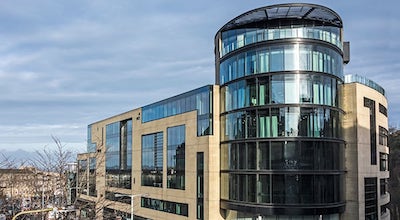By Mark McSherry
Edinburgh-based investment giant Baillie Gifford revealed on Monday that its assets under management and advice have fallen again — this time to £208 billion.
Baillie Gifford had assets of roughly £365 billion at the end of 2021.
Some of Baillie Gifford’s funds suffered hugely amid the brutal global sell-off in 2022 in technology and growth stocks, which featured heavily in the firm’s portfolios.
The news of the fall in assets came in the results of Baillie Gifford’s £12 billion flagship fund, the Scottish Mortgage Investment Trust plc, for the six months to September 30, 2023.
“We will have periods when we underperform the market, and the six months in question was one,” said Scottish Mortgage.
“Since the end of March, our net asset value per share, with debt at fair value (NAV), fell by 2.7% compared with a rise of 4.3% for the FTSE All-World Index (both in total return terms).
“The longer-term performance record remains good.
“Over five years, the NAV has gained 59.6% versus 49.6%, and over 10 years it has increased by 358.1% against 189.5% (both against the index).”
Scottish Mortgage manager Tom Slater wrote in his report that the scepticism of analysts and pundits around the performance and valuation of the giant fund’s private company investments is “misplaced.”
What’s more, Slater said the monster closed-end fund invested £74 million into six private companies during the six months.
Slater wrote: “Not all large companies capable of outsized growth are listed on public stock markets. Accessing such opportunities at a reasonable cost is a distinctive part of our role for shareholders.
“The operational performance of our major private businesses has been strong despite the difficult prevailing conditions.
“The average revenue growth rate of the top ten private holdings was 38% in 2022.
“Market scepticism around the performance and valuation of our private assets is misplaced, and we believe they will be a significant source of value creation for the Trust in the coming years.
“We deployed approximately £74m into 6 private companies in the half year, and one of our private holdings, the beauty company Oddity, went public.
“Divining much that is useful from stock markets over a six-month period is challenging. The market’s positive return has been driven by a handful of large technology companies that would seem to be the early beneficiaries of developments in Artificial Intelligence (AI).
“The capabilities of today’s AI systems are sufficient for widespread commercial deployment. Their ability to communicate in natural language based on an ‘understanding’ of the relevant concepts lends itself to many different use cases.
“Building a foundational AI model can cost billions of dollars, so only those with the deepest pockets can compete. Giant consumer technology companies have those resources and vast user bases to whom they can deploy the resulting applications.
“Chipmaker NVIDIA, whose shares we bought in 2016, has been the key provider of the necessary computing infrastructure for AI, or as CEO Jensen Huang put it, ‘if you don’t build it, they won’t show up’.
“The acceleration in its business has been breathtaking. Revenue guidance for the third quarter is $16bn, which compares to less than $6bn a year ago.
“The step change that we have seen in AI’s capabilities would have been impossible without NVIDIA’s silicon.
“The pace of progress has exceeded our expectations and has been well ahead of what Moore’s Law would have dictated for traditional computing.
“Instead of seeing the end of an aberrant growth era, we may be entering a period of even faster development. If so, the consequences will be yet more profound.
“We are mindful that the pioneers may be the easiest to identify when seismic shifts occur in the technology landscape, but they are not always the biggest beneficiaries. Often, nimble new entrants emerge and arrogate opportunities before a dominant incumbent can react.
“This creates dramatic and long-lasting investment opportunities, as we saw in the PC, Internet and Mobile transformations.
“We do not claim to be able to predict macroeconomic developments and are often bemused by the level of coverage given to the future course of interest rates. We can, though, observe the changes we have seen at the companies we own.
“Unable to assume that markets will provide capital, they are generating their own supply. They are trimming costs and focusing on the most promising projects.
“We are encouraged that they continue to spend heavily on research and development but believe a higher cost of capital introduces a healthy dose of prioritisation.
“The free cash flow from our listed portfolio more than doubled in the twelve months to the end of June.
“Rising rates have little impact on our company. During the years of exceptionally low interest rates we proactively extended the term of our debt.
“The majority of our borrowings do not come due until after 2036 and our interest cost is below 3%.
“Progress is being made across a broad swathe of technologies. What makes this so exciting for growth investors is that the number of ways companies can combine these technologies grows exponentially.
“Accelerated computing drives artificial intelligence, which can be applied to vast datasets in the Cloud, enabling breakthroughs in healthcare and so on.
“Our companies are fitter for the future, and the opportunity they address grows at an accelerating pace.
“Economic news is usually dreary, and geopolitics rarely reassuring, but entrepreneurs’ collective creativity and productivity are a source of great confidence and optimism.”
